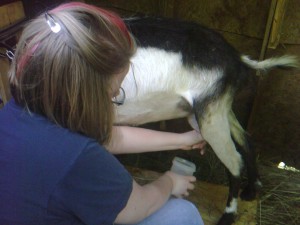“I make a perfectly adequate living at my day job, it's at an income level that I have a hard time imagining I could bring in as a full-time artist.”
Last week a passionate and smart reader emailed this.
It's a question I get a lot (in fact, it's one of the first question I got in the last free Q+A), so I thought I'd share my answer here.
The question is really asking, “How can I ever replace my current income with my crafty business? Is this even possible?”
My answer: Yes. But let's be realistic:
You current income is the result of lots of hard work.
Right now, you're a professional. Something that took years and years of work to accomplish. Years of education and skill-building.
You put in the hours before your reached your present income level.
This is true of ANY career, including self-employment
It took learning + time + practice + ladder-climbing to get where you are, it will take the same in a new business.
You poured hours of time into studying and learning and interning into your current career, you will need to do the same for a career in handmade work.
Yes, you can start selling your crafts quickly.
But NO, you can't replace your professional-level salary quickly.
But it's not the same.
Because the kind of work and studying that got you into your current income level isn't the same kind of work that will help you grow your business.
And this is good news!
Succeeding in your business does NOT require an MBA.
Learning about growing your crafty business does NOT necessitate formal school or lots of classes or an endless unpaid internship.
It will require curiosity, passion and a pile of self-directed researching.
Unlike a “traditional” career, self-employment does not have one clear path from newbie to professional.
The trick (and the delight) is that you make your own path.
You discover what works for you, what doesn't.
What your customers want, what they don't.
And you can do this as quickly or as slowly (perhaps while you're still in that dayjob) as you want!
But! Do you really need to replace your salary?
The original question assumes that you HAVE to replace your salary before you quit your dayjob and I want to throw some doubt on that.
Do you really have to?
Could you reduce your expenses?
Could you have several smaller streams of income?
Would you be willing to trade some of your luxuries in order to live your passion?
This is just the jumping off point of thinking about it, I haven't even gotten into the HOW of making it all work! If you are delighted at the idea of quitting your dajob, join me on a free Q+A call this Thursday. July 1st is my anniversary of quitting and to celebrate, I'm answering your questions. Just sign up here to get the details.


